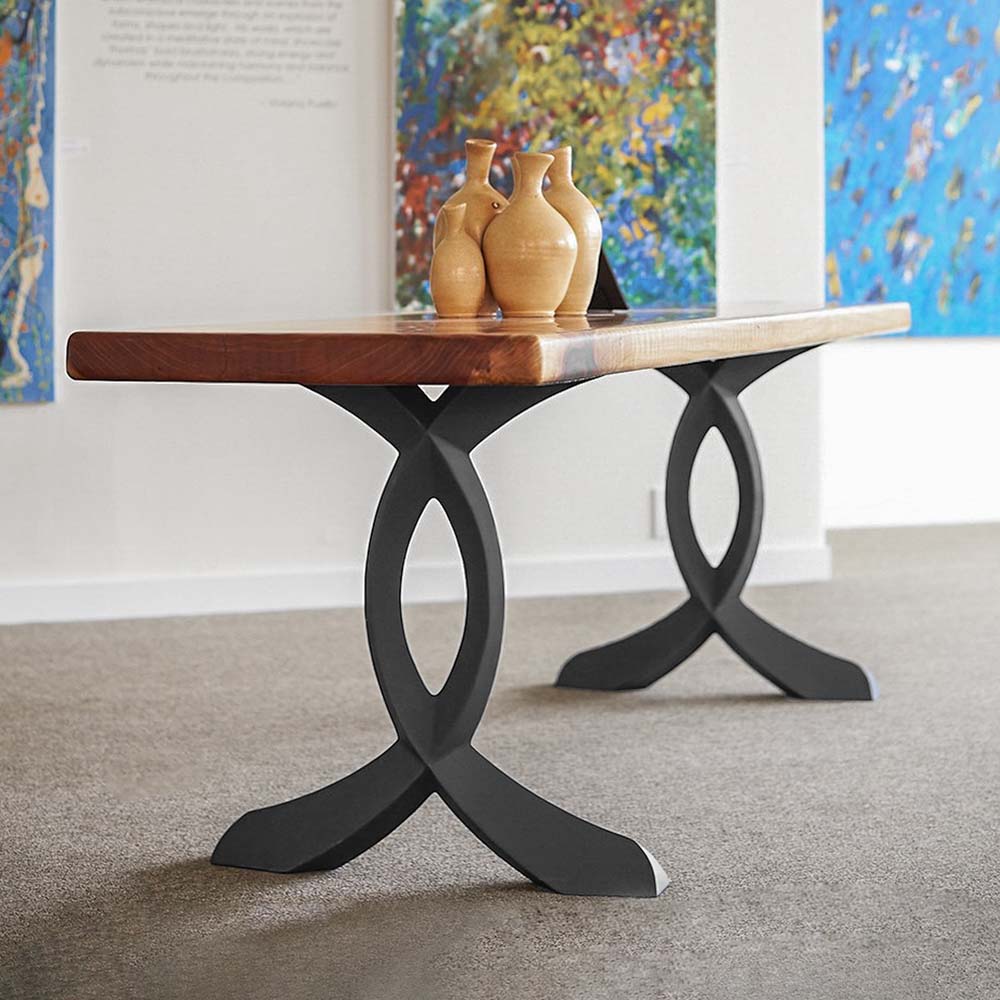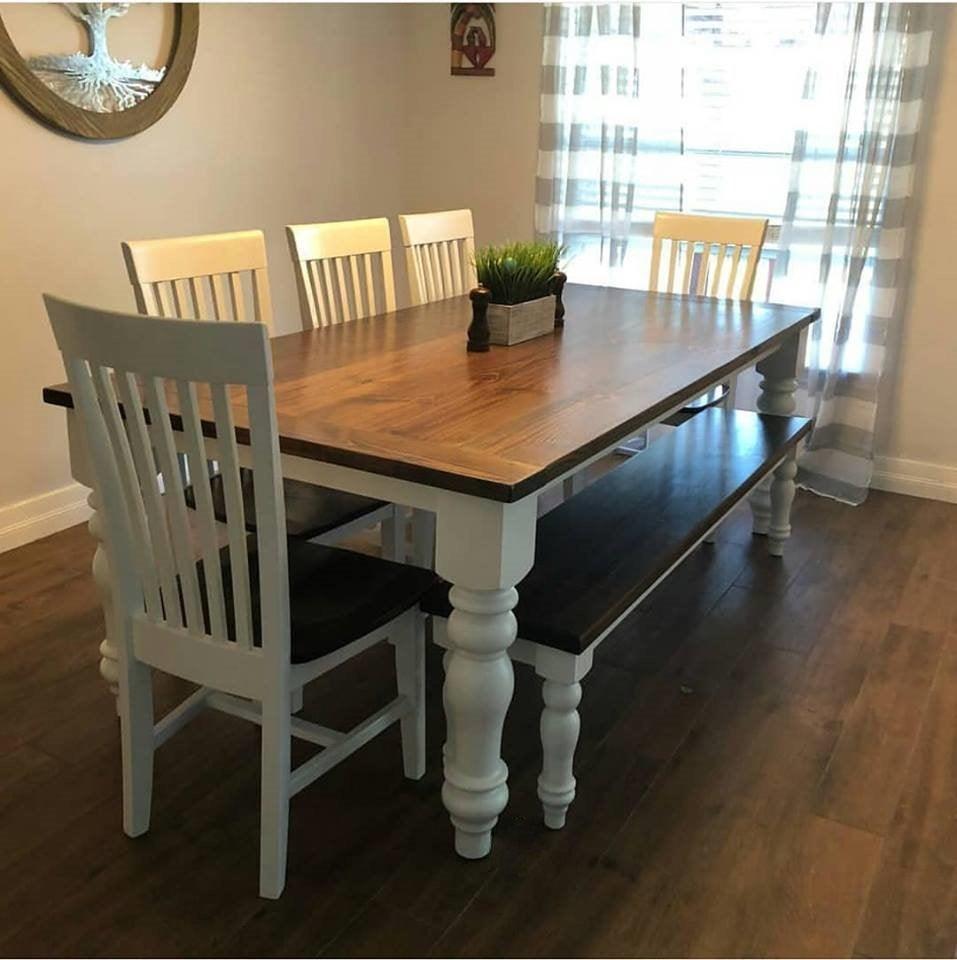An In-depth Appearance at Dining Table Leg Styles: Finding the Ideal Suit
Choosing the best table leg design is vital for both visual appeal and practical capability. Standard four legs offer classic sophistication and stability, while the stand base supplies boosted legroom and a contemporary appearance. For those with bigger tables, trestle legs guarantee sturdy assistance, whereas hairpin legs introduce a mid-century modern-day ambiance with their minimalist style. The x-shaped legs blend contemporary design with improved stability. Each of these choices brings distinct advantages, making the selection greater than just an issue of preference. Discover even more to uncover which design completely enhances your dining room and way of life.
Typical Four Legs
Amongst the numerous kinds of eating table leg styles, the traditional four-leg design remains a timeless selection for lots of families. 4 legs offer balanced support, ensuring the table continues to be secure and qualified of birthing considerable weight (dining room table legs).
From an aesthetic perspective, the traditional four-leg layout can be conveniently adjusted to different indoor designs. Whether crafted from wood, metal, or a mix of products, these legs can be delicately sculpted, smooth and minimalistic, or anything in between. Their flexibility allows them to enhance both rustic and modern setups perfectly.
Moreover, the uncomplicated framework of the four-leg design facilitates ease of movement and positioning within a space. Unlike more facility bases, this design reduces obstructions, supplying enough legroom for restaurants. In recap, the standard four-leg table leg style weds withstanding beauty with practical performance, making it an astute choice for those looking for both form and feature in their dining furnishings.
Pedestal Base
Usually celebrated for its elegant and space-efficient style, the pedestal base is a recognized alternative to the standard four-leg configuration in dining table leg designs. This distinctive base usually includes a solitary main column sustaining the tabletop, which can differ in form, from ornately sculpted timber to sleek, contemporary steel. One of the main benefits of the pedestal base is its capability to optimize legroom and seating flexibility. Without edge legs, diners are paid for better freedom of motion, making it an excellent selection for round and oblong tables that promote more intimate and inclusive celebrations.
In addition, the stand base's main support can deal with substantial weight, permitting the use of larger table tops, such as marble or thick hardwood. This strength coupled with its aesthetic adaptability makes the stand base a prominent option in both standard and modern indoor setups. It can effortlessly incorporate with different style styles, from traditional sophistication to minimal modernity. The central column itself offers a canvas for intricate designs and artistic expressions, adding an element of aesthetic rate of interest underneath the table. In summary, the pedestal base integrates functionality snappy, making it an improved and functional choice for diverse eating atmospheres.
Trestle Legs
Trestle legs offer a durable and ageless foundation for eating tables, characterized by their straight cross-bracing and durable assistance beam of lights. Originating from middle ages times, this design has actually developed yet preserved its necessary framework, making it a seasonal favorite in both standard and contemporary setups. The main trestle beam of light, commonly supported by two or even more vertical articles, uses extraordinary stability, permitting larger table lengths without the demand for additional legs.
A substantial advantage of trestle leg tables is the sufficient legroom they offer. Unlike tables with four edge legs, the absence of obstructions at the table's sides provides unimpeded area for chairs and diners, improving convenience and ease of access. This makes trestle tables excellent for accommodating bigger gatherings, whether in a dining space or a reception hall.
From rustic farmhouse to sleek modern styles, trestle legs can be personalized to fit private tastes. Their long-lasting charm and useful advantages make trestle legs an engaging selection for those looking for both style and functionality in their dining table.
Hairpin Legs

The appeal of hairpin legs hinges on their simplicity and adaptability - dining room table legs. Offered in a series of materials, consisting of steel and brass, they can be ended up in numerous shades to enhance different interior designs. Whether matched with a rustic wood tabletop or a modern glass surface area, hairpin legs easily mix performance with a touch of classic beauty
Sturdiness is an additional remarkable function of barrette legs. Regardless of their fragile appearance, these legs are engineered to bear considerable weight, making sure the dining table remains steady and safe. In addition, they are relatively easy to install, making them a prominent choice for do it yourself page lovers and expert furnishings manufacturers alike.
X-Shaped Legs

Constructed from products such as view it now steel, wood, or a combination of both, X-shaped legs can be customized to match various style choices. Steel legs typically offer a streamlined and industrial feel, suitable for loft-style homes and modern dining areas.
Additionally, the engineering behind X-shaped legs makes sure also weight circulation, minimizing the risk of wobbling and improving resilience. This makes them especially fit for bigger eating tables that call for added assistance. Essentially, X-shaped legs mix functional engineering with modern-day visual appeals, her explanation making them a timeless choice for diverse dining atmospheres.
Conclusion
A comprehensive understanding of dining table leg styles reveals the distinct qualities and advantages of each style. Trestle legs guarantee robust assistance for bigger tables, and barrette legs present a mid-century contemporary aesthetic.